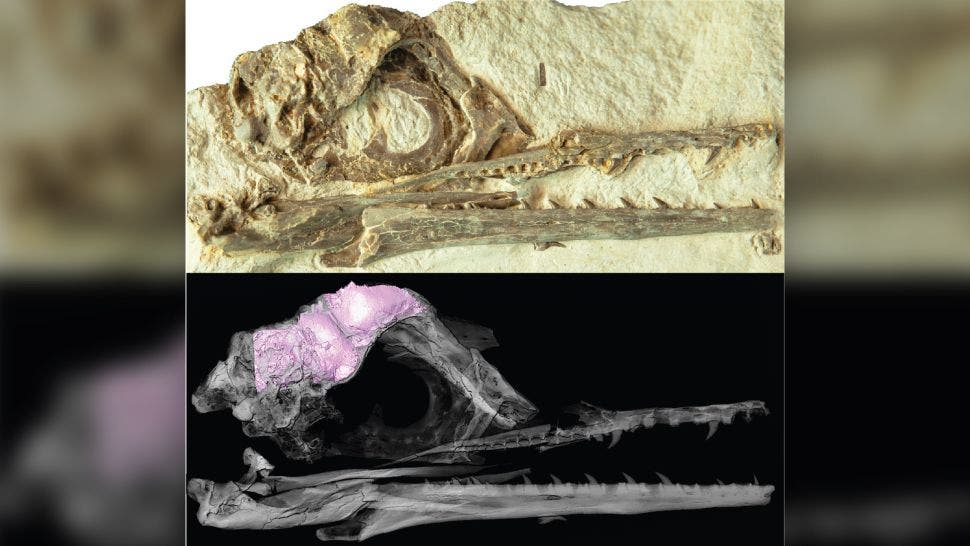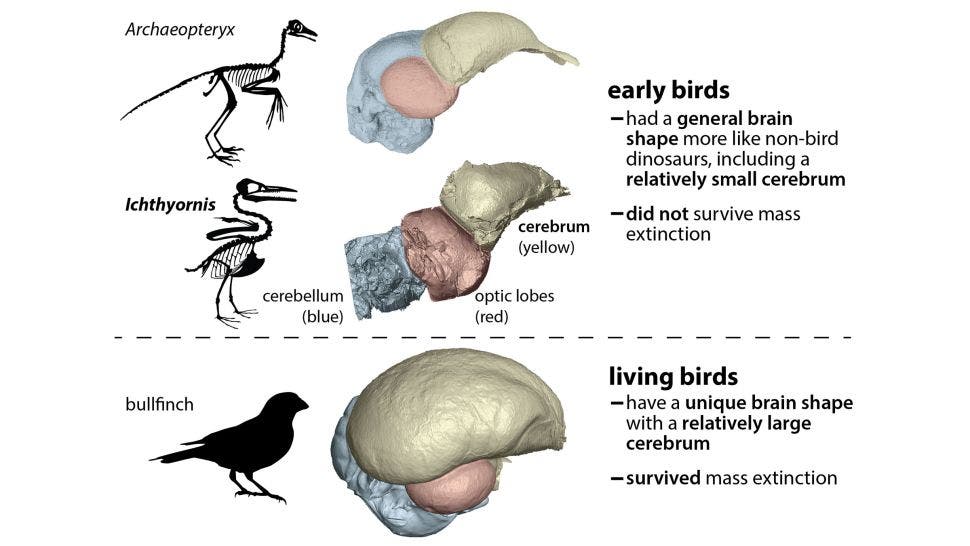
You might have heard that birds are essentially living dinosaurs, just like humans are mammals. Dinosaurs actually represented a huge group spanning countless species of reptiles that held the top carnivore and top herbivore spots. But out of all these different dinosaur groups, it was only birds that survived the disastrous asteroid impact from 65 million years ago, which killed 80% of all life on Earth.
A new study tried to demystify what helped birds to survive when all other dinosaurs failed. According to the findings reported in the journal Science Advances, many ancient species of birds also perished in the wake of the damning asteroid impact off the coast of Mexico’s Yucatan Peninsula. However, the scientists found that the lineages of birds that did endure must have had larger forebrains. Turns out, you want to pick brains over brawn during an apocalypse.
Who you calling bird brain
The fossil record hasn’t been kind to bird bones, which are more often than not too delicate and fragile to endure over millions of years. What few bird fossils paleontologists know about though are enough to firmly place birds in the same group as dinosaurs, having evolved from a group of meat-eating dinosaurs known as theropods. It’s the same group that the famous Tyrannosaurus rex belonged to, although birds evolved from much smaller theropods.
After a long reign spanning more than 140 million years, the age of the dinosaurs came to an abrupt end. Only puny birds remained, which rapidly expanded and filled vacant ecological roles. Some 150 million years ago, the oldest birds looked like feathered dinosaurs and had sharp teeth. Over time birds lost their teeth and evolved beaks.
Not very much is known though about the brains of early birds since their braincases (the interior of the skull) rarely fossilized. This is why scientists are very excited by a partial skull belonging to Ichthyornis, an ancient bird that lived about 85 million years ago in Kansas.
In a new study, researchers at the University of Texas at Austin have completed an X-ray CT scan of the fossil, digitally reconstructing the Cretaceous bird’s facial skeleton and braincase in 3D without having to invasively alter the fossils in any way.
The analysis showed that Ichthyornis‘ brain was surprisingly similar to that of other dinosaurs, in contrast to living birds that have disproportionately large forebrains relative to the rest of their brain regions. However, the ancient bird’s brain did have an ace up its sleeve: a wulst. This brain structure was previously observed only in bird species that appeared after the mass extinction event caused by the asteroid impact. The wulst is thought to have played a major role in visual and sensory processing that could have played a critical role in flight.

Finding a wulst in the brain of a Cretaceous dinosaur shows that ancient birds had brains that were more complex than previously thought. And since Ichthyornis is very closely related to modern birds but still lacked the massive forebrain we’re used to seeing in living birds, the researchers inferred that “those big brains evolved in the ancestor of living birds,” Chris Torres, a National Science Foundation postdoctoral research fellow in the Heritage College of Osteopathic Medicine at Ohio University, told Live Science. Torres was a graduate student at the University of Texas when he participated in the fossils’ CT scanning.
“Ichthyornis exhibited a wulst and segmented palate, previously proposed to have arisen within extant birds. The origin of Aves (extant birds) is marked by larger, reshaped brains indicating selection for relatively large telencephala and eyes but not by uniquely small body size. Sensory system differences, potentially linked to these shifts, may help explain avian survivorship relative to other dinosaurs,” the authors wrote in their study.
The combination of bigger brains, small size, their ability to eat a wider palate of foods, and their ability to fly ultimately may have helped birds survive the last mass extinction. Today, there are at least 11,000 bird species.


